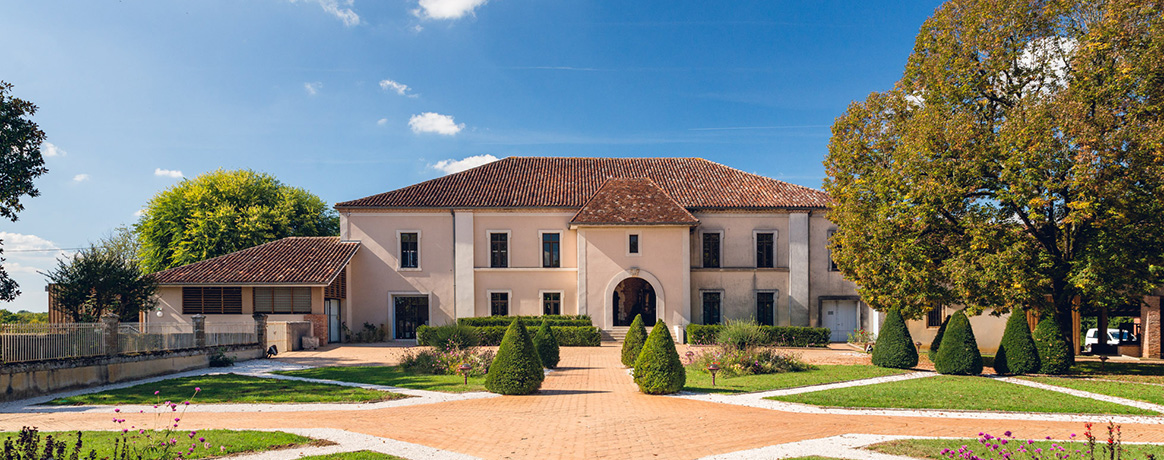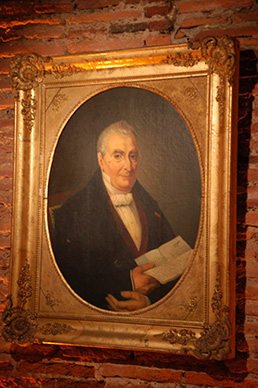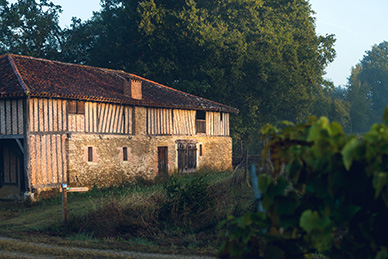
The Domaine d’Ognoas dates back to the Middle Ages. It has been a stately home, an ecclesiastical property and, since the beginning of the 20th century, a public property belonging to the Landes General Council.
The Ognoas estate dates back to the end of the 11th century or the beginning of the 12th century. Ognoas belonged to the Viscounty of Marsan which in turn was part of the property of the Viscounty of Béarn until 1607. In 1274, a certain Arnaud Bosquet was the only person to be able to lay claim to the title of “Lord of Ognoas”. In 1770, Etienne Lormand purchased the Ognoas estate and his son extended the property by acquiring the estate of Tampouy in 1775.
Incidentally, François I and his retinue stopped in Tampouy in 1530. The French King was regularised his wedding to Eleanor of Austria, the sister of Charles V, Holy Roman Emperor, at the Convent of the Order of Saint Clare in Beyries, this time without proxy. In 1847, the last in the line of Lormands died without leaving an heir, bequeathing the estate to the Church.
 It was then administrated by the Bishopric of Aire-sur-l’Adour until the Law of 1905 separating the Church from the State transferred the property from the Diocese to the Département.
It was then administrated by the Bishopric of Aire-sur-l’Adour until the Law of 1905 separating the Church from the State transferred the property from the Diocese to the Département.
This is how the estate, covering more than 650 hectares, came to be under the responsibility of the Landes General Council which chose to make this exceptional site a showcase for the Landes area. The main buildings on the estate have been completely renovated and are open to the public.
Today, the Domaine d’Ognoas is an agricultural holding combining almost 50 hectares of viticulture and more than 100 hectares of agriculture (corn, soya and sunflowers). The estate also boasts a forest covering some 300 hectares which provides the wood used to make the Armagnac barrels.
Ognoas also has hiking paths, the voie verte du Marsan green way, a mill with its pond, gîtes housed the 18th-century tenant farms and a 14th-century fortified house, Tampouy.
The Lormands behind the building of the estate
The Lormands are a perfect example of those bourgeois families of modest origin which achieved notability during the 18th century through trade. With their new-found wealth, they purchased noble land which, in Marsan, gave them nobility, status and the opportunity to occupy important positions in local society.
Etienne, the founder of the dynasty, was born in Bayonne around 1701. He lived with his mother and worked as a “modest porte balle, a poor peddler”. In 1770, he acquired the Ognoas estate and by 1780 was juge de la Bourse before becoming commissaire au “rôle du vingtième” (taxes) in 1788, the year of his death.
 Nicolas, Etienne’s eldest son, was born on 2 April 1727. In 1760 he married Julie Laxague, the daughter of a prominent merchant from Bayonne. An alderman and merchant himself, he became Director of the Chamber of Commerce on 18 September 1775. On 25 January 1775, he purchased the Tampouy estate from Anne du Brocas for 70,200 pounds.
Nicolas, Etienne’s eldest son, was born on 2 April 1727. In 1760 he married Julie Laxague, the daughter of a prominent merchant from Bayonne. An alderman and merchant himself, he became Director of the Chamber of Commerce on 18 September 1775. On 25 January 1775, he purchased the Tampouy estate from Anne du Brocas for 70,200 pounds.
Jacques-Taurin, the last in the line of Lormands, was born in Grand Bayonne on 5 September 1762. He was a lawyer at the Paris bar then at the Parliament of Navarre. On 27 March 1782, at the age of 20, he was admitted, with waiver of age, to the office of “Advisor to the Court of Parliament, Accounts, Aid and Finance of Navarre” in Pau. After the revolution and the empire, he was elected Deputy of Basses-Pyrénées. After retiring from political life, he became administrator of the Saint-Léon de Bayonne hospital.
Jacques-Taurin died on 24 January 1847 at the age of 85 in the house in Bayonne where he was born. Leaving no heirs, he bequeathed 4 million francs in gold of the 5 million in his possession to a number of religious and philanthropic institutions. The estates of Ognoas and Tampouy were left to the little seminary in the diocese of Aire-sur-l’Adour. The portrait of Jacques-Taurin Lormand can be seen in the tasting cellar. The painting is registered as a historical monument.